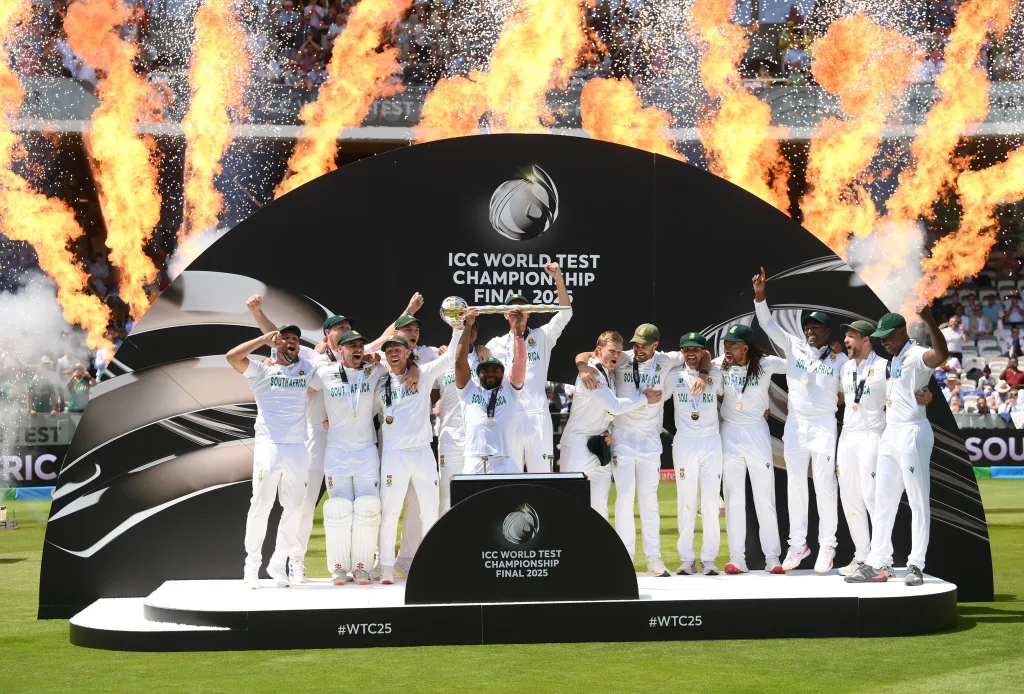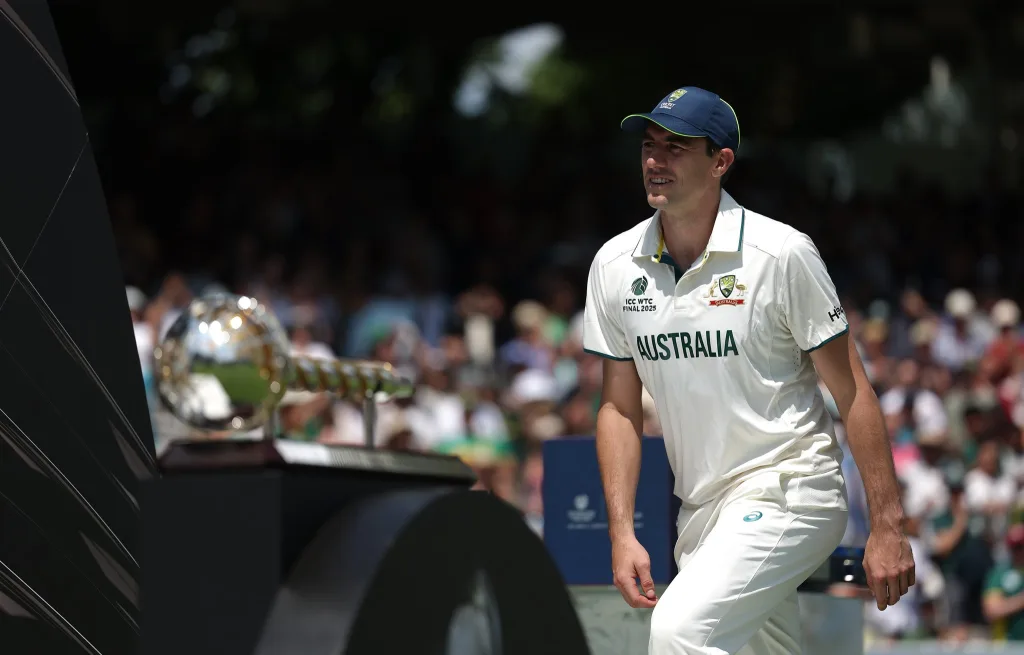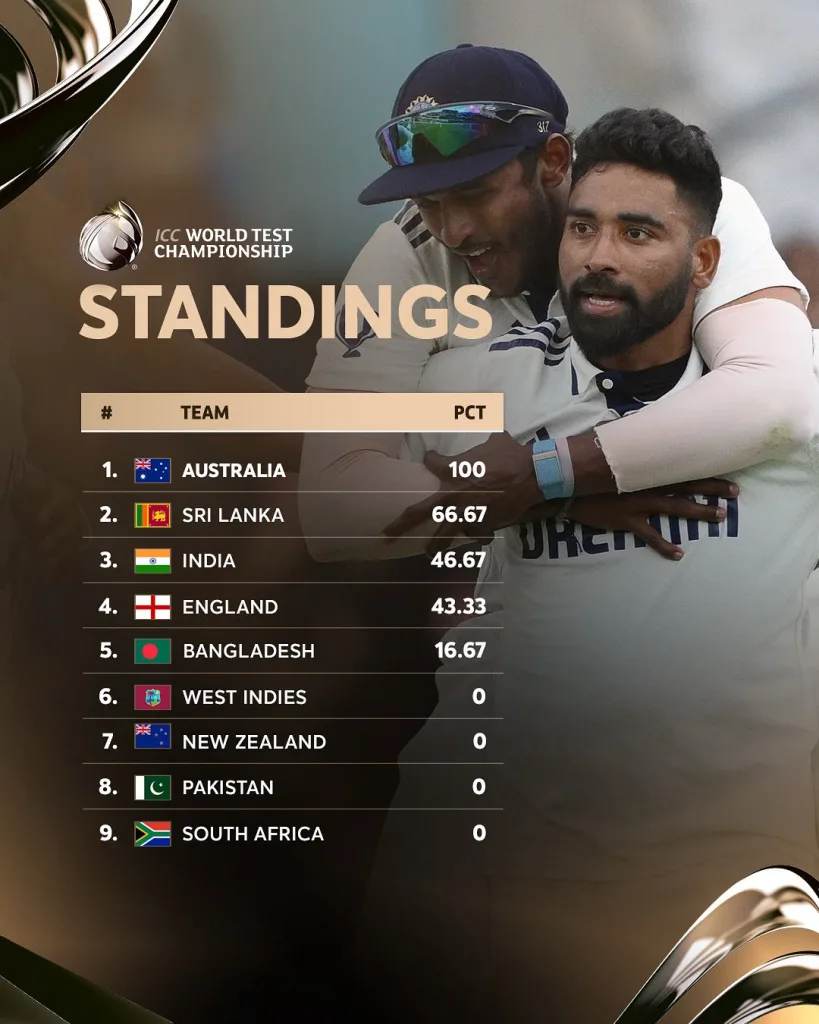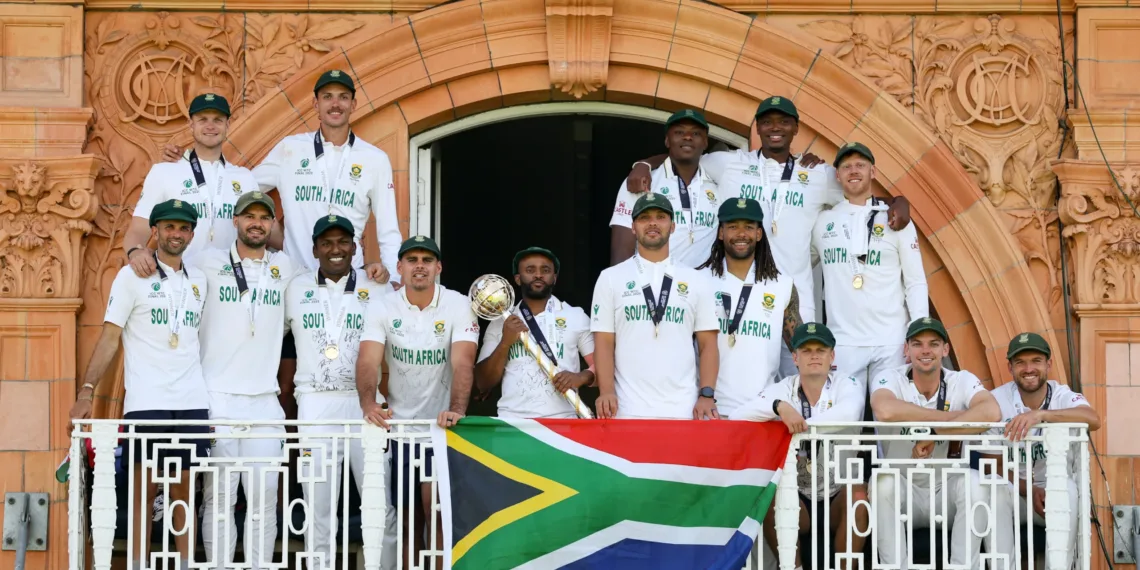The future of the World Test Championship hangs in balance as cricket’s governing body contemplates a revolutionary two-tier system that could fundamentally reshape Test cricket from 2027 onwards. While the International Cricket Council’s working group explores dividing the WTC into separate divisions, England and Australia have taken contrasting positions on this contentious proposal that could determine the fate of cricket’s longest format.
Table of Contents
The Proposed Two-Tier Model Structure
The ICC’s working group, led by former New Zealand batsman Roger Twose, is actively considering splitting the World Test Championship into two divisions of six teams each, commencing with the 2027-29 cycle. This system would create a clear hierarchy in Test cricket, with promotion and relegation mechanisms similar to football league structures.

Under the current ICC rankings, the proposed Division One would feature cricket’s powerhouses: Australia, India, England, South Africa, New Zealand, and Sri Lanka. Division Two would comprise Pakistan (currently ranked seventh), West Indies, Bangladesh, Zimbabwe, Ireland, and Afghanistan.
The working group’s recommendations will be crucial for the ICC board’s decision-making process, with countries already engaging in bilateral series discussions for the next WTC cycle. The urgency is compounded by the upcoming media rights tender for the 2027-31 commercial cycle, making the WTC’s format determination critical for revenue projections.
England’s Strong Opposition and Concerns
The England and Wales Cricket Board (ECB) has voiced significant reservations about the two-tier proposal, with chairman Richard Thompson articulating the board’s concerns in stark terms. England’s primary fear centers on the potential loss of their most lucrative rivalries should they face relegation.
Thompson’s position is unambiguous: “We wouldn’t want, as England… we fall into Division Two and we don’t play Australia and India? That couldn’t happen.” This statement encapsulates England’s fundamental concern about being separated from their traditional rivals due to poor performance.
The ECB chairman believes that improving the existing WTC format would be more beneficial than creating divisional cricket. He cited South Africa’s recent triumph in the 2023-25 WTC final, where they defeated Australia to claim their maiden championship, as evidence that the current system can produce compelling narratives and unexpected winners.
Thompson emphasized that the WTC has “definitely improved the narrative” and “created relevance” in Test cricket. He particularly highlighted the emotional impact of South Africa’s victory, noting how seeing former South African captain Graeme Smith “in tears on the outfield” demonstrated the championship’s significance.
Australia’s Conditional Support
Cricket Australia has adopted a more nuanced approach, expressing openness to the two-tier system while attaching important conditions. CEO Todd Greenberg outlined Australia’s perspective, emphasizing that any structural change must benefit the broader cricket ecosystem.

Greenberg stated: “My open mind is in reference to, if it helps grow the opportunities for those other countries to be stronger, and have better resources in Test match cricket, if it does that, then I’m open for it. But if it doesn’t achieve that, and it actually affects the opposite, then I wouldn’t be supportive.”
Australia’s position reflects a broader strategic vision where the “big three” cricket nations (India, England, and Australia) would play a role in strengthening other Test-playing countries. Greenberg emphasized that “it’s in our interest to see a strong West Indies, a strong Pakistan, New Zealand, [and] South Africa.”
This conditional support suggests Australia recognizes the potential benefits of a two-tier system in creating more competitive balance and development opportunities for emerging Test nations, provided it doesn’t weaken the overall standard of international cricket.
Historical Context and Current WTC Success
The timing of this debate is particularly significant given South Africa’s recent WTC triumph. The Proteas defeated defending champions Australia by five wickets in the 2025 final at Lord’s, marking their first ICC trophy since the 1998 Knockout Trophy.
This victory validates arguments on both sides of the two-tier debate. Supporters of the current system point to South Africa’s success as proof that the existing format allows for competitive balance and surprising outcomes. However, proponents of the two-tier system argue that such success could be better supported and more frequent with proper divisional structure.
The 2023-25 WTC cycle demonstrated both the championship’s appeal and its challenges. The tournament featured 69 matches across 27 series, with teams playing six series each (three home, three away). The points system remained largely unchanged, with wins worth 12 points, draws worth 4 points, and ties worth 6 points.
Financial and Commercial Implications
The two-tier model discussion is intrinsically linked to cricket’s commercial future. England’s opposition stems partly from the potential loss of high-revenue series against India and Australia, which are among the sport’s most lucrative fixtures.
Current bilateral arrangements ensure regular encounters between cricket’s biggest markets, generating substantial revenue through broadcasting rights, sponsorships, and attendance. A two-tier system could disrupt these established revenue streams if traditional powerhouses find themselves in different divisions.
However, proponents argue that a more structured, meaningful competition could enhance the overall value of Test cricket by creating clearer stakes and more compelling narratives around promotion and relegation battles.
Working Group Composition and Timeline
The ICC working group tasked with WTC improvement includes representation from various cricket boards, with Roger Twose from New Zealand Cricket leading the initiative. Recently appointed ICC CEO Sanjog Gupta is also expected to play a significant role in the group’s deliberations.

Reports suggest an eight-person committee structure with representation from both Test-playing nations and associate members, ensuring diverse perspectives in the decision-making process. The group’s recommendations will be crucial for the ICC board’s final decision on the WTC’s future format.
Current WTC Standings Analysis
Proposed Division Structure Based on Current Rankings
| Division One | Current Rank | Division Two | Current Rank |
|---|---|---|---|
| Australia | 1 | Pakistan | 7 |
| India | 2 | West Indies | 8 |
| England | 3 | Bangladesh | 9 |
| South Africa | 4 | Zimbabwe | 10 |
| New Zealand | 5 | Ireland | 11 |
| Sri Lanka | 6 | Afghanistan | 12 |
Key Concerns by Nation
| Nation | Position | Primary Concerns |
|---|---|---|
| England | Opposed | Loss of Australia/India rivalries |
| Australia | Conditional Support | Must strengthen global cricket |
| India | Not Stated | Revenue implications likely |
| South Africa | Not Stated | Recent WTC winners |
| Pakistan | Concerned | Relegated to Division Two |
| West Indies | Supportive | Better development opportunities |
Financial Impact Analysis
| Aspect | Current System | Two-Tier System |
|---|---|---|
| Big Three Encounters | Guaranteed | Risk of separation |
| Revenue Distribution | Fixed ICC model | Performance-based |
| Broadcasting Value | Traditional rivalries | Promotion/relegation drama |
| Development Funding | Standard allocation | Tiered investment |
Global Cricket Development Perspective
The two-tier model debate extends beyond established cricket nations to encompass the sport’s global development strategy. Countries like Afghanistan and Ireland, relatively new to Test cricket, could benefit from a structured pathway that provides clear progression opportunities.
The current system’s challenge lies in ensuring competitive fixtures for all Test nations while maintaining commercial viability. Some countries face limited opportunities against stronger opponents, potentially hampering their development and fan engagement.
A two-tier system could address these concerns by creating more evenly matched competitions within each division, potentially leading to more competitive cricket and improved standards across all Test-playing nations.
Scheduling and Logistical Challenges
Thompson highlighted additional complications facing cricket’s scheduling, particularly the inclusion of cricket in the 2028 Los Angeles Olympics. He noted: “What happens in 2028, when we have an Olympics, and our best 11 cricketers have got to go to LA for two weeks in the middle of July? That is going to throw up some challenges.”
This Olympic commitment adds another layer of complexity to Test cricket scheduling, potentially supporting arguments for more structured, predictable fixtures that a two-tier system might provide.
The current WTC already faces criticism for its uneven fixture distribution, with some teams playing more matches than others due to bilateral agreement variations. A two-tier system could potentially address these scheduling inconsistencies.
Future Implications and Decision Timeline
The ICC’s decision on the two-tier model will have far-reaching implications for cricket’s future. With the 2027-29 WTC cycle approaching and media rights discussions on the horizon, the urgency for resolution is increasing.
Countries are already engaging in preliminary discussions for bilateral series that would form part of the next WTC cycle, making format clarity essential for proper planning and commercial negotiations.
The working group’s recommendations will likely be presented to the ICC board in the coming months, with a final decision expected well before the 2027 cycle commencement to allow adequate preparation time.
Alternative Solutions and Compromises
Rather than a complete overhaul to a two-tier system, some stakeholders propose modifications to the existing WTC format. These could include:
- Improved points systems that account for match conditions and opponent strength
- Better scheduling coordination to ensure fairer fixture distribution
- Enhanced promotion of existing rivalries and narratives
- Increased support for developing Test nations within the current structure
Thompson’s suggestion that the “World Test Championship could work better than it does” with “certain changes” reflects this middle-ground approach that could satisfy various stakeholder concerns without dramatic structural changes.
Read More: Manchester United Open Talks with Brighton Over £100M Carlos Baleba Deal Through Intermediaries
FAQs
1. What is the proposed two-tier WTC system and when would it start?
The ICC is considering splitting the World Test Championship into two divisions of six teams each, starting from the 2027-29 cycle. Division One would feature the top-ranked teams while Division Two would include lower-ranked nations with promotion/relegation mechanisms.
Why is England opposed to the two-tier model?
England fears that relegation could separate them from lucrative rivalries with Australia and India, potentially costing significant revenue and traditional cricket relationships. ECB chairman Richard Thompson stated they wouldn’t want to be in Division Two without playing these key opponents.
What are Australia’s conditions for supporting the two-tier system?
Australia supports the model only if it helps strengthen other Test-playing nations and provides them with better resources. Cricket Australia CEO Todd Greenberg emphasized it must benefit global cricket development, not weaken it.
Which teams would be in each division under current rankings?
Division One would likely include Australia, India, England, South Africa, New Zealand, and Sri Lanka. Division Two would feature Pakistan, West Indies, Bangladesh, Zimbabwe, Ireland, and Afghanistan based on current ICC Test rankings.
When will the ICC make a final decision on this proposal?
The ICC working group led by Roger Twose is expected to make recommendations to the board soon, with a decision needed before 2027 to allow proper planning for the next WTC cycle and upcoming media rights negotiations.








